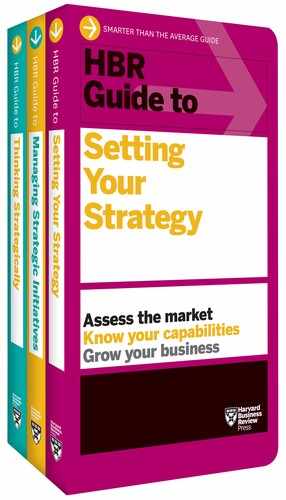CHAPTER 15
Learning in the Thick of It
by Marilyn Darling, Charles Parry, and Joseph Moore
IDEA IN BRIEF
Like many managers, you probably conduct after-action reviews (AARs) to extract lessons from key projects and apply them to others. But in most companies, AARs don’t fulfill their promise: Scrapped projects, poor investments, and failed safety measures repeat themselves, while hoped-for gains rarely materialize. One manufacturing executive, reading an AAR report for a failed project that had stumbled twice before, realized with horror that the team was “discovering” the same mistakes all over again.
How to transform your AARs from diagnoses of past failure into aids for future success? Realize that looking for lessons isn’t the same as learning them. View the AAR as an ongoing learning process, rather than a onetime meeting, report, or postmortem. Set the stage for AARs with rigorous before-action planning—articulating your intended results, anticipated challenges, and lessons from previous similar situations. Conduct mini-AARs after each project milestone, holding everyone accountable for applying key lessons quickly in the next project phase.
Companies that master this process gain—and sustain—competitive advantage. They avoid repeating the kinds of errors that gnaw away at stakeholder value. And instead of merely fixing problems, they adapt more rapidly and effectively than rivals to challenges no one even imagined.
IDEA IN PRACTICE
To improve your AAR process:
Build your AAR regimen slowly
Rather than applying the AAR process across the board, begin using it selectively—on projects where the payoff is greatest and leaders have committed to working through several AAR cycles.
Focus on efforts critical to your team’s mission, so people will be motivated to participate.
Conduct a before-action review (BAR)
Before embarking on an important project, answer these questions:
- “What are our intended results and metrics?” Does your team want to improve product quality? Accelerate its response to emergencies? Improve sales win/loss ratio?
- “What challenges do we anticipate?” Do you expect shortages of certain resources? A turn in customers’ preferences?
- “What have we or others learned from similar projects?” Be candid about past failures—focusing on improving performance, not placing blame.
- “What will enable us to succeed this time?” What practices helped you succeed in earlier efforts? What worked before that should be tested under different circumstances?
Responses to these questions align team members’ objectives and set the stage for effective AARs as your project unfolds.
Conduct mini-BARs and AARs
Break big projects into smaller chunks, bookended by short BAR and AAR meetings conducted in task-focused groups. You’ll establish feedback loops that maximize project performance and foster an ongoing learning culture. But tailor your process to fit each project and project phase. For example, during periods of intense activity, use brief daily AAR meetings to help teams coordinate and improve the next day’s work. At other times, less frequent meetings—monthly or quarterly—may be sufficient to identify and correct emerging problems.
Focus on your own team’s learning
Lessons must first and foremost benefit your team, so resist any urge to create an AAR document specifically for some other corporate use. Focus team members on improving their own learning and, as a result, their own performance.
Your people may generate a lesson during the AAR process, but they won’t have learned the lesson until they’ve changed their behavior. It takes multiple iterations to produce solutions that stand up under any conditions. (See the sidebar “Five Ways to Put AARs to Work at Work.”)
FIVE WAYS TO PUT AARS TO WORK AT WORK
The U.S. Army’s standing enemy brigade (referred to as OPFOR) applies the after-action review (AAR) process to everything it does, but that’s not realistic for most companies. Business leaders must act selectively, with an eye toward resources and potential payoffs. Don’t even think about creating an AAR regimen without determining who is likely to learn from it and how they will benefit. Build slowly, beginning with activities where the payoff is greatest and where leaders have committed to working through several AAR cycles. Focus on areas critical to a team’s mission so members have good reason to participate. And customize the process to fit each project and project phase. For example, during periods of intense activity, brief daily AAR meetings can help teams coordinate and improve the next day’s activities. At other times, meetings might occur monthly or quarterly and be used to identify exceptions in volumes of operational data and to understand the causes. The level of activity should always match the potential value of lessons learned. Here are some ways you can use AARs, based on examples from companies that have used them effectively.
__________
Marilyn Darling, Charles Parry, and retired Colonel Joseph Moore were formerly researchers and consultants with Signet Consulting Group. Moore is a former commander of the 11th Armored Cavalry Regiment, the Opposing Force at the U.S. Army’s National Training Center in Fort Irwin, California.
Adapted from an article in Harvard Business Review, July–August 2005 (product #R0507G).

